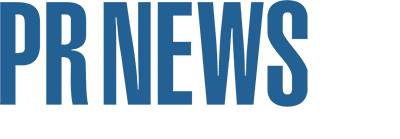
[Editor's Note: September is Ethics Month in the PR industry. Here, contributor John McCartney explores how to integrate ethics when practicing agile PR response.]
In 2023, fast fashion giant Shein invited a group of influencers to tour what it called a “model” factory in China. The campaign was designed to counter mounting allegations of exploitative labor practices. Instead of building goodwill, the effort backfired and was widely criticized as performative and misleading. Not only did it deepen public skepticism toward Shein, but it also damaged the credibility of the influencers involved.
The lesson was clear: agility without authenticity doesn't work. Shein acted quickly to protect its reputation, but because the response lacked an ethical foundation, it failed.
This example highlights a vital truth for today’s communicators: in a rapidly shifting universe, agility is crucial. However, when speed compromises values, reputational damage often results. As a boutique PR agency founder and someone committed to ethics in all my actions, I have learned that ethical practices are not a barrier to agility but rather its very foundation.
What is Agile PR?
Agile PR involves the ability to respond quickly to news cycles, adapt messaging to shifting public sentiment and shift strategies with flexibility. It’s about staying in sync with a world where headlines change by the minute. Similarly, ethical PR focuses on honesty, transparency and accountability to both clients and the public. It’s about building trust not just for the next news cycle, but for the long run.
Ethical agility merges these approaches. It means acting swiftly without compromising on principles. It's about creating systems and strategies that are nimble yet always guided by core values.
The Cost of Moving Fast Without Ethics
Brands often feel pressure to respond instantly to cultural moments or consumer demands. But rushing can create more problems than it solves. Take the example of fashion and beauty brands launching “inclusive” campaigns without addressing systemic issues within their own companies. On the surface, these campaigns appear agile and progressive. But when consumers discover a lack of genuine commitment behind the messaging, skepticism sets in. Instead of earning loyalty, the brand risks being labeled opportunistic or hypocritical.
Agility without ethics is reactionary. It might generate a spike in engagement or a few favorable headlines, but over time, it erodes credibility. And credibility, once lost, is difficult to regain.
A Framework for Ethical Agility
How can PR professionals make sure their work strikes a balance between speed and integrity? Base it on three core pillars:
- Pause for Principle: Speed is important, but it should never override judgment. Before responding to a breaking issue, pause to ask: Does this align with the client’s stated values? Will it hold up under scrutiny six months from now? A simple internal checklist, a set of “go or no-go” questions, can help prevent rushed decisions that might backfire. Sometimes, taking an extra hour to assess alignment makes all the difference between a campaign that builds trust and one that erodes it.
- Build Values into Your PR Playbook: Agility becomes easier when the foundation is solid. During client onboarding, clearly define values, tone of voice and ethical boundaries. Once these guardrails are set, teams can move faster without second-guessing. For example, some clients now develop pre-approved response frameworks for social issues. This way, when a relevant story breaks, the team can respond quickly while remaining aligned with the brand’s ethics and commitments.
- Empower the Right Voices: When deadlines are tight, it's tempting to limit decision-making to the PR team. However, inclusive collaboration produces better and more ethical results. Include internal DEI or compliance teams and seek input from diverse voices on the client side. This helps reveal blind spots that could otherwise lead to tone-deaf campaigns. True agility isn't just about moving fast but about moving with purpose foresight.
Knowing When to Say No
Being agile doesn’t mean saying yes to everything. One of the most overlooked parts of agility is the ability to say no. Not every opportunity is the right one, even if it offers short-term buzz. I’ve seen this when clients were offered reactive media pitches that could have gained attention but conflicted with their long-term positioning. In these moments, agility involved pivoting away from an attractive, but misaligned, opportunity.
Saying no to an opportunity that doesn’t make sense for a client protects that client’s integrity and, in the long run, boosts their credibility with stakeholders. Agility isn’t about being everywhere at once. It’s about being in the right places, at the right times, with the right message.
Reframing Agility as a Values-Driven Strength
In today’s media landscape, agility and ethics work together as essential forces. Campaigns that are loud and rapid are not always the most successful. The true winners are brands that understand who they are, act clearly and move with confidence.
Ethical agility allows PR professionals to respond quickly while safeguarding long-term trust. It ensures that when brands enter the spotlight, they do so with credibility still intact. In other words, agility doesn’t mean losing your footing. It means building a strong foundation that enables you to move swiftly and honestly.
John McCartney is Founder at JMAC PR.
